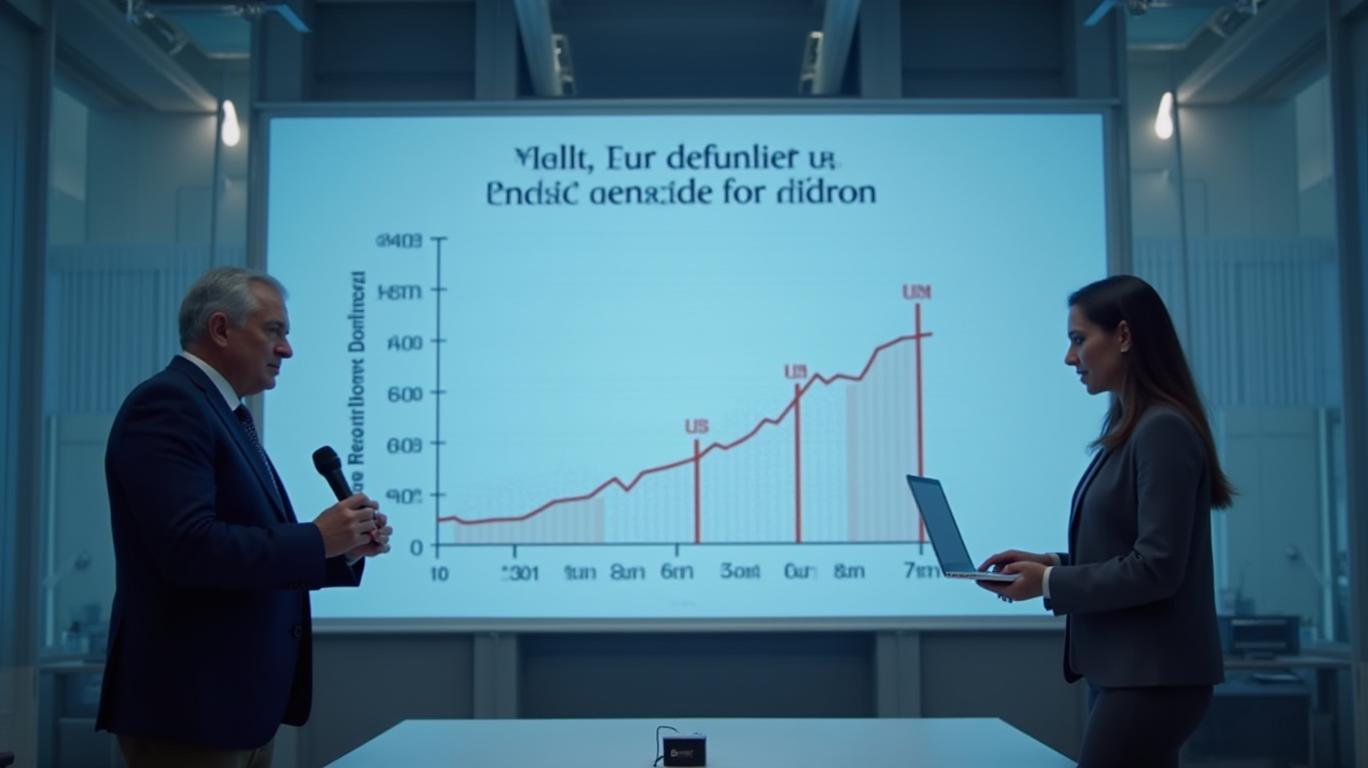OpenText’s AI-Driven Cost Revolution: A Strategic Play for Fiscal 2026 and Beyond
OpenText Corporation (NASDAQ/TSX: OTEX) has unveiled a bold strategic shift aimed at transforming its cost structure through artificial intelligence (AI), targeting $490–$550 million in annualized savings by fiscal 2027, with $245–$275 million expected by fiscal 2026. This aggressive Business Optimization Plan (BOP) expansion, announced in its third-quarter fiscal 2025 results, reflects a calculated move to position the enterprise software giant for long-term growth amid macroeconomic headwinds. Let’s dissect the strategy, its financial underpinnings, and its implications for investors.
Ask Aime: "OpenText's AI-driven cost cut strategy"
A Financial Crossroads: Challenges and Opportunities
OpenText’s third-quarter results highlighted both operational resilience and lingering headwinds. Total revenues fell 13.3% year-over-year (YoY) to $1.254 billion, though adjusted for the AMC divestiture, the decline narrowed to 4.5%. Cloud revenues, however, rose 1.8% YoY to $463 million, marking 17 consecutive quarters of organic growth, a testament to its cloud-first pivot. Meanwhile, Annual Recurring Revenues (ARR) dipped 10.1% YoY to $1.030 billion, though adjusted for AMC, this narrowed to a 2.8% decline, underscoring stabilization in its subscription model.
The company’s adjusted EBITDA margin of 31.5% and $374 million in free cash flow (up 7.4% YoY) provide critical liquidity for reinvestment. Yet, net income fell 5.6% YoY, signaling pressure to align costs with revenue trends. Enter the BOP.
Ask Aime: What is OpenText's new AI strategy and how will it impact stock prices and investment decisions?
The Business Optimization Plan: Cost Cuts with a Purpose
The BOP’s expansion, approved in April 2025, now totals $260 million in costs, including:
- Workforce reductions: A net 2,000 job cuts (up 1,600 from prior plans), driven by automation and operational simplification.
- Facility closures: Rationalizing its global real estate footprint to reduce overhead.
The goal is $490–$550 million in annualized savings, with half realized by fiscal 2026. These savings are not merely cost reductions; they are reinvested in high-margin AI-driven products like Aviator AI (decision-making tools) and Cybersecurity Cloud (AI-powered threat detection). CEO Mark Barrenechea emphasized: “This is about proving the resiliency of our business model while fueling innovation.”
AI as the Engine of Transformation
OpenText’s AI investments are central to its strategy. The launch of Cloud Editions 25.2 (Titanium X), a unified platform for hybrid/SaaS environments, integrates Aviator AI to automate workflows and enhance decision-making. Similarly, its upgraded Cybersecurity Cloud leverages AI to detect and mitigate threats proactively.
Ask Aime: How will OpenText's BOP impact its long-term growth potential?

These initiatives are already bearing fruit. Notable customer wins in Q3 included ABN AMRO Bank, Fidelity National Financial, and the U.S. Air Force, underscoring the appeal of its AI-driven solutions. CFO Chadwick Westlake noted that the BOP’s savings will “enable us to maintain upper-quartile margins and free cash flow while fueling long-term growth.”
Shareholder Returns: Prudent Capital Allocation
OpenText’s commitment to shareholders is evident in its $450 million expanded share repurchase program and a $0.2625 per share dividend. In Q3 alone, it returned $183 million to shareholders via buybacks ($115 million) and dividends ($68 million). With $1.278 billion in cash and a disciplined approach to capital allocation, the company balances cost discipline with growth reinvestment.
Risks and the Road Ahead
While the BOP’s savings targets are ambitious, risks remain. Economic volatility could delay customer spending, and execution challenges (e.g., workforce cuts) may disrupt operations. OpenText also faces intense competition in AI and cybersecurity. However, its $463 million in cloud revenue growth and $374 million in free cash flow provide a sturdy foundation.
Conclusion: A Strategic Bet on AI’s Payoff
OpenText’s BOP is a high-stakes, high-reward strategy. The $490–$550 million in savings—with 50% achieved by fiscal 2026—are not just cost cuts but fuel for AI-driven growth. With cloud revenues expanding for 17 straight quarters, a strong balance sheet ($1.278 billion cash), and major enterprise wins under its belt, the company is well-positioned to capitalize on AI’s potential.
Investors should monitor two key metrics:
1. ARR recovery: A rebound from its 2.8% adjusted decline would signal subscription health.
2. Margin expansion: If the BOP’s savings translate to upper-quartile margins, it could redefine OpenText’s valuation.
In a sector where AI is the new currency, OpenText’s strategic pivot could turn fiscal 2026 into a turning point—not just for cost efficiency, but for sustained leadership in enterprise software.
Data as of March 31, 2025. Forward-looking statements are subject to risks and uncertainties.


_cbf77e8c1748017079428.jpeg)






